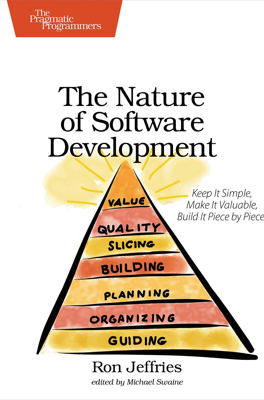Guiding Goes Better “Feature by Feature”
Feature-by-Feature Methodology Enhances Project Management
Feature-by-Feature Approach: Emphasizes that every project starts with known deadlines but often leads to unmet goals due to the wish to have everything complete by that end date. A "feature-by-feature" methodology, in contrast, allows projects to be more manageable, visible, and adaptable to changes and real-time feedback.
Problem with Traditional Phases: Traditional project phases (Analysis, Design, Coding, Testing) often do not fare well in practice. Typically, projects face real issues only visible during or after the testing phase, which is too late to make significant changes or adjustments.
Drawbacks of Monolithic Projects: Projects planned with an all-or-nothing approach waste resources on unachievable parts, leading to high costs and inefficient workflows. Often, large parts of the design and code are wasted when they cannot be fully implemented.
Advantages of Incremental Releases: Suggests planning for multiple incremental releases from the start, simplifying management and focusing on delivering usable features continually throughout the project timeline. This approach allows for early detection of issues and timely redirection of efforts towards more critical, higher-value features.
Visibility and Adaptability: By delivering one feature at a time, project stakeholders can see tangible progress, adjust project trajectories, and address risks effectively. Frequent feature delivery enhances transparency and enables better management decisions based on visible progress and real user feedback.
Risk Management: A gradual, feature-based workflow allows teams to respond promptly to technological and market risks by adjusting feature sets and priorities based on ongoing evaluation and insights.
Final Considerations: Emphasizes the necessity of adapting project plans based on visible advancements and dynamic needs, suggesting that delivering software feature by feature not only brings better project outcomes but also aligns closely with business and user requirements that may evolve over time.
Future Guidance:
Further reading and insights are available in chapters focused on thriving teams and managing natural software development processes, highlighting the continuation of themes related to effective project management and team dynamics.
This feature-focused strategy ensures efficiency and adaptability, crucial for contemporary software development landscapes where needs and tools evolve swiftly.
